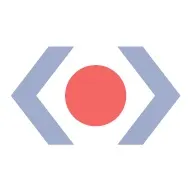At This Dot Labs, we work alongside Fortune 500 engineering teams as development partners every day, focusing on how to help reduce deployment delays, decrease regression risks, improve application performance, maximize productivity, increase user engagement, and provide standards that allow for rapid iteration across design, engineering, and other disciplines.
Here are 5 simple ways you can achieve success multipliers within your own organization.
Resilient Development with Testing
As software development increases, so does our complexity. One of the root causes of defects is deficient testing and code inspection. Empowering developers with testing helps decrease regression risk, and reduce deployment delays.
-
Enables developers to develop and test components in isolation to understand component behavior under different conditions with ease. Decrease visual development iterations by at least 50% through testing multiple component views without the need for a data connection with tools like Storybook.
-
Capture 20-30% more regressions and UI bugs in pre-release cycle with automated visual testing, using tools like Applitools.2 Ensure scalability of performance at all stages of development, from the render layer to the API request layer by defining a constant web and API performance testing layer.
Efficiencies and Improved Performance with GraphQL
GraphQL increases application performance by allowing the reduction of complex data to achieve more performant deliverables. This also provides more productive options to deliver requirements faster without new APIs being developed.
-
Improve data enrichment performance and render speed by reducing unused field retrieval that can create an estimated 50-60% reduction of API payloads.
-
Adoption of GraphQL allows you access to features for free such as “out of the box” push based event design systems.
-
Separation of team concerns: Allow your API team to migrate to a microservices approach without impacting the deliverables of the UI teams.
-
Increase team efficiency by decreasing the need for coordination around architecture decisions between API and developer teams with decoupling,
Improving Developer Onboarding and Productivity with Standard Tooling
Bringing developers onto an existing or new project can often be difficult, resulting in lost project time handling start up procedures. Creating and/or improving standard development procedures will improve onboarding and developer spin-up time, regardless of the project. Here are a few simple ways to do so.
-
Create components faster that follow the organization standard by using template repositories, and existing build tooling created by architects.
-
Allows for scalability in growing development teams in any region by onboarding them into a system that automatically handles that spin-up of new or existing work.
-
Allows cross-functional movement of development resources between teams and easier integration of less expensive resources, gaining upwards of 62% greater productivity.
-
Reduce production defects through tightly coupled development processes that do not allow the commit of unverified or uninspected code.
Increasing Brand Consistency with Design Systems
-
Design systems are becoming a standard that enterprises are adopting to allow for rapid iteration using a shared vocabulary across design, engineering, and other disciplines.
-
Allows for developers, and designers, to create and build components that follow the agreed upon standard and philosophy, increasing brand equity by 39%.
-
Adhere to DRY development principles through a unified, customizable component library, such as inputs, buttons, modals, tables, tooltips, charts, icons, charts, snackbars.
-
Scale design standards seamlessly with the guarantee of a constant brand, and theme for all IP being released by your organization.
Replacing Dedicated Development Resources with Low Code Solutions
Companies with superior technologies or processes will invariably unseat established ones. Old ways of doing things must be replaced by better ones. Low code solutions help organizations achieve internal efficiencies through effectively outsourcing work previously completed by dedicated development resources, and building low maintenance technology solutions instead.
-
Low code solutions are force multipliers, and allow organizations to scale easily.
-
These technology enhancements increase the ability for internal teams to deliver business applications faster, and improve internal processes going forward.
-
Building in-house low-code solutions will reduce the need for ongoing, dedicated development resources, thereby decreasing overhead costs.
